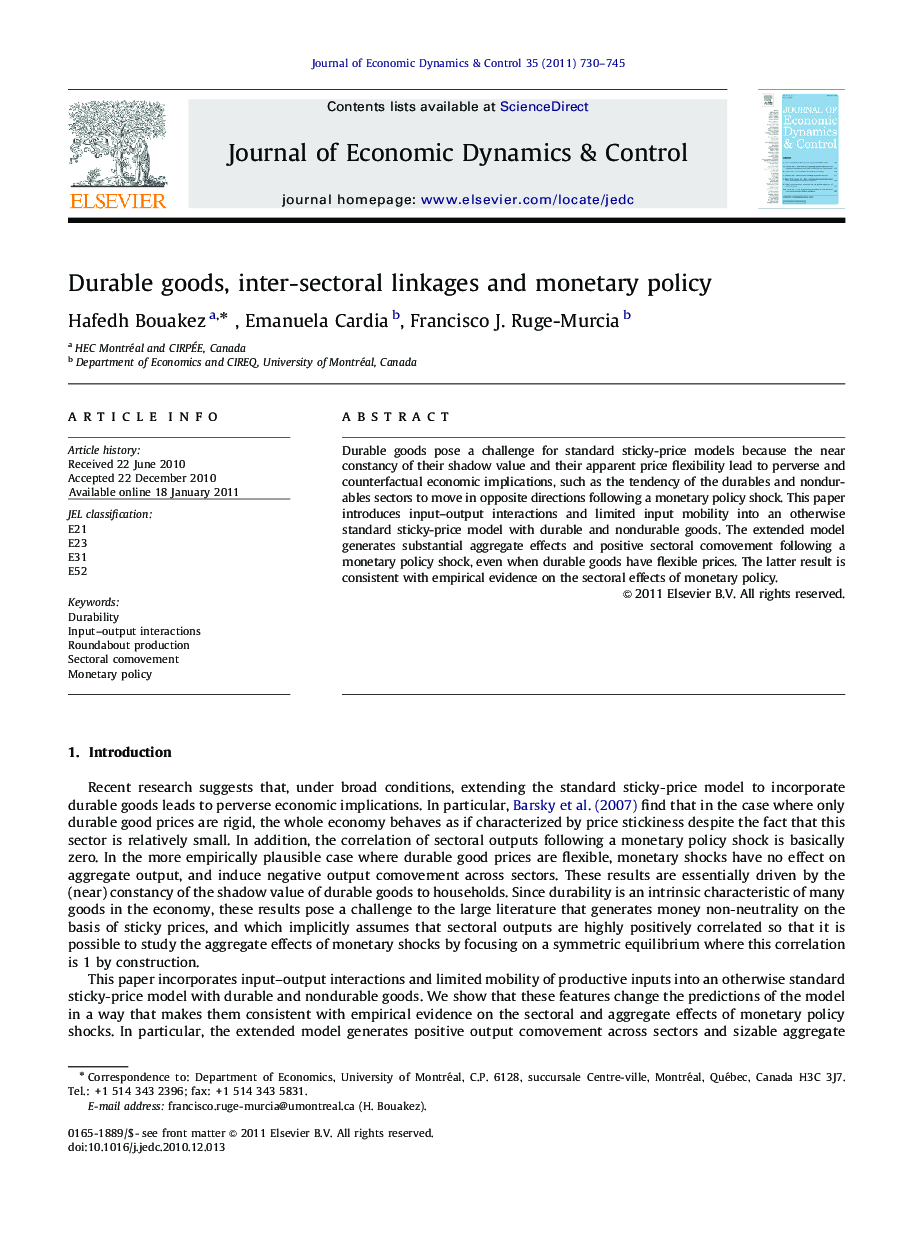| Article ID | Journal | Published Year | Pages | File Type |
|---|---|---|---|---|
| 5099544 | Journal of Economic Dynamics and Control | 2011 | 16 Pages |
Abstract
Durable goods pose a challenge for standard sticky-price models because the near constancy of their shadow value and their apparent price flexibility lead to perverse and counterfactual economic implications, such as the tendency of the durables and nondurables sectors to move in opposite directions following a monetary policy shock. This paper introduces input-output interactions and limited input mobility into an otherwise standard sticky-price model with durable and nondurable goods. The extended model generates substantial aggregate effects and positive sectoral comovement following a monetary policy shock, even when durable goods have flexible prices. The latter result is consistent with empirical evidence on the sectoral effects of monetary policy.
Related Topics
Physical Sciences and Engineering
Mathematics
Control and Optimization
Authors
Hafedh Bouakez, Emanuela Cardia, Francisco J. Ruge-Murcia,
